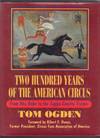

Argon, a New Constituent of the Atmosphere. Received and Read January 31, 1895.
by RAYLEIGH, LORD (J.W. STRUTT) and WILLIAM RAMSAY. - THE DISCOVERY OF ARGON
- Used
- first
- Condition
- See description
- Seller
-
Copenhagen, Denmark
Payment Methods Accepted
About This Item
1895. (London, Harrison and Sons, 1895). 4to. No wrappers as extracted from "Philosophical Transactions", Vol. 186 - I, Series A. Pp. 187-241 a. 8 textillustrations (apparatus). Fine and clean. First printing of this importent paper in the history of chemistry, Lord Rayleigh's most famous discovery, announcing the discovery of this new gas, the first finding of one of the rare gases (inert gases) having unusual properties, and forming a distinct group in the periodic table, and all with zero valency."The original paper in the "Philosophical Transactions" will undoubtly rank as a classic, the investigation having been a particularly brilliant ine." (Ernst von Meyer in History of Chemistry). For this discovery Lord Rayleigh and W. Ramsay received the Nobel Prize (1904).After having made several measuring of the densities of gases, "Rayleigh came across a curious puzzle. With oxygen, he always obtained the same density, regardless of how the oxygen might be produced, whether from one particular compound, from a second compound, or from the air. The situation was different with nitrogen. The nitrogen he obtained from air constantly showed a slightly higher density than the nitrogen he obtained from any of various compounds. Rayleigh could think of several ways in which the nitrogen obtained from air might be contaminated but none of the possibilities checked out experimentally. He was so frustrated that he went so far as to write to the journal "Nature" asking for suggestions. Ramsay, a brilliant Scottish chemist, asked permission to tackle the problem and received it. The upshot was that a new gas, somewhat denser that nitrogen, was discovered to exist in the atmosphere. It was named argon and it was the first of a series of rare gases of unusual properties whose existence had never been suspected."(Asimow).Dibner, Heralds of Science No. 50 - Neville, Historical Chemical Library vol. II, p.358.
Reviews
(Log in or Create an Account first!)
Details
- Bookseller
- Herman H. J. Lynge & Son
(DK)
- Bookseller's Inventory #
- 42221
- Title
- Argon, a New Constituent of the Atmosphere. Received and Read January 31, 1895.
- Author
- RAYLEIGH, LORD (J.W. STRUTT) and WILLIAM RAMSAY. - THE DISCOVERY OF ARGON
- Book Condition
- Used
- Date Published
- 1895
Terms of Sale
Herman H. J. Lynge & Son
30 day return guarantee, with full refund including original shipping costs for up to 30 days after delivery if an item arrives misdescribed or damaged.
About the Seller
Herman H. J. Lynge & Son
Biblio member since 2017
Copenhagen
About Herman H. J. Lynge & Son
Herman H. J. Lynge & Son A/S was founded 1821 in Copenhagen, and has been a member of the Danish Antiquarian Booksellers Association (ABF) and International League of Antiquarian Booksellers (ILAB-LILA) since their beginning.
Glossary
Some terminology that may be used in this description includes:
- New
- A new book is a book previously not circulated to a buyer. Although a new book is typically free of any faults or defects, "new"...
- Wrappers
- The paper covering on the outside of a paperback. Also see the entry for pictorial wraps, color illustrated coverings for...
- Fine
- A book in fine condition exhibits no flaws. A fine condition book closely approaches As New condition, but may lack the...


